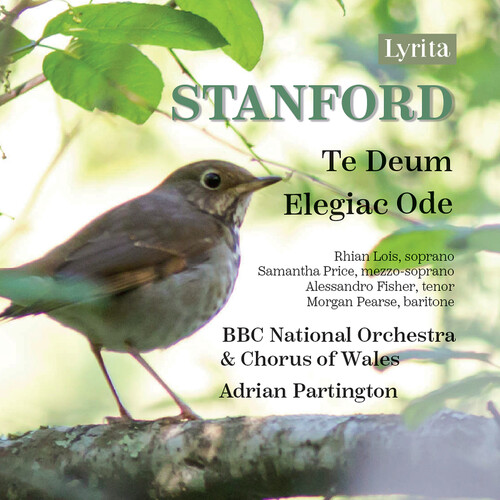Show results for
Deals
- 4K Ultra HD Sale
- Action Sale
- Alternative Rock Sale
- Anime sale
- Award Winners Sale
- Bear Family Sale
- Blu ray Sale
- Blues on Sale
- British Sale
- Classical Music Sale
- Comedy Music Sale
- Comedy Sale
- Country Sale
- Criterion Sale
- Cult Films sale
- Drama Sale
- Electronic Music sale
- Horror Sci fi Sale
- Jazz Sale
- Kids and Family Sale
- Metal Sale
- Music Video Sale
- Musicals on Sale
- Mystery Sale
- Naxos Label Sale
- Page to Screen Sale
- Paramount Sale
- Rap and Hip Hop Sale
- Reggae Sale
- Rock
- Rock and Pop Sale
- Rock Legends
- Soul Music Sale
- TV Sale
- Vinyl on Sale
- War Films and Westerns on Sale

Stanford: Te Deum & Elegiac Ode
- Format: CD
- Release Date: 7/5/2024

Stanford: Te Deum & Elegiac Ode
- Format: CD
- Release Date: 7/5/2024
- Composers: Charles Villiers Stanford
- Label: Lyrita
- UPC: 5020926043528
- Item #: 2649107X
- Genre: Classical Artists
- Release Date: 7/5/2024

Product Notes
By the time Stanford had received a commission from the Norfolk and Norwich Festival to write a choral work for them in 1884, he had, at the age of 32, already begun to assert himself as one of Britain's leading composers. The Elegiac Ode was, however, his first mature foray into the world of major British choral festivals. Some of the Elegiac Ode had in fact been sketched three years earlier in 1881, but after the Norwich commission was received, Stanford evidently grasped the opportunity to complete the work in it's entirety in July 1884. The words were taken from the last part of Whitman's elegy, 'When lilacs in the dooryard bloom'd', written in the aftermath of President Lincoln's assassination in 1865 (it was a text which Stanford's pupil, Holst, later used for his Ode to Death, composed in the wake of the war in 1919). Taking the seven verses of the burial hymn, Stanford divided his chosen text into four parts, thereby creating a four-movement musical structure more akin to a choral symphony with it's substantial (and thematically related) choral outer movements flanking two shorter inner essays. By the time Stanford had received a commission from the Norfolk and Norwich Festival to write a choral work for them in 1884, he had, at the age of 32, already begun to assert himself as one of Britain's leading composers. The Elegiac Ode was, however, his first mature foray into the world of major British choral festivals. Some of the Elegiac Ode had in fact been sketched three years earlier in 1881, but after the Norwich commission was received, Stanford evidently grasped the opportunity to complete the work in it's entirety in July 1884. The words were taken from the last part of Whitman's elegy, 'When lilacs in the dooryard bloom'd', written in the aftermath of President Lincoln's assassination in 1865 (it was a text which Stanford's pupil, Holst, later used for his Ode to Death, composed in the wake of the war in 1919). Taking the seven verses of the burial hymn, Stanford divided his chosen text into four parts, thereby creating a four-movement musical structure more akin to a choral symphony with it's substantial (and thematically related) choral outer movements flanking two shorter inner essays. Stanford's large-scale setting of the Te Deum Op. 66 was first sung at the Leeds Festival on 6 October 1898 and it's ambitious, opulent dimensions were clearly intended to be a fitting commemoration of the accession to the throne of Queen Victoria (it's dedicatee) sixty years earlier as well as a tribute to the full-bodied, well-trained Leeds chorus of 350 singers. A particular feature of the Te Deum is the grandeur of much of it's choral writing. Though also dramatic in it's impact, a dominating feature of the Te Deum is it's prominent use of the chorus, and the many fulsome sonorities Stanford was able to draw from the magnificent 'instrument' of the Leeds voices. © Jeremy Dibble

